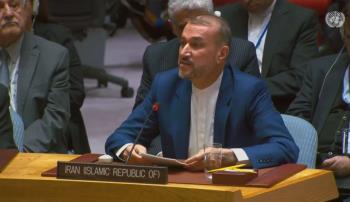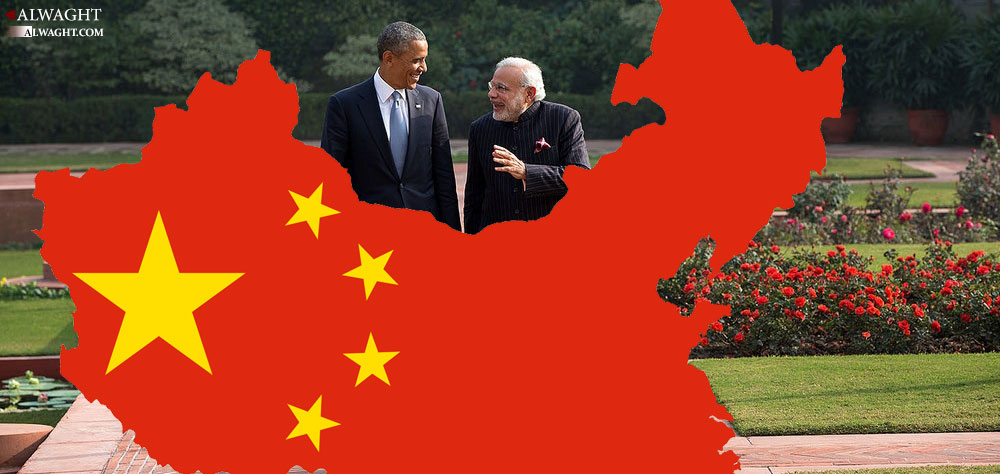Alwaght- Composition of the US strategy of “Pivot to the East Asia” during the President Barack Obama’s tenure is indicative of the US obsession with the potential threats coming from the East Asia, a rising part of the world that can in the future challenge the US' global position. Notwithstanding significance of controlling the energy resources including the oil hubs of the West Asia region for the White House, the American leaders since the beginning of 2009 have begun to put premium on the East Asian developments.
Due to the growing Chinese economic– and thus political and military– power and the conflict with the US policies on the global stage, the region is poised to be the key hotspot of a confrontation between these two global powers in the second quarter of the new century. Although in the wake of the 21st century the incidents of the West Asia made the world’s hottest news headlines, it does not appear this situation will continue. The Obama administration with its pivot to the East Asia strategy showed that the US intended to shift its point of political focus. Donald J. Trump, the US' incoming president, on the other side has broken a 37-year-old tradition of the White House’s foreign policy after talking by phone to the Taiwanese president.
But the Trump breach of diplomatic taboo was faced by a swift Beijing’s reaction. China is familiar with the fact that the US military spending cuts as well as Trump’s isolationist policies will redirect the point of US concentration to Beijing. Trump’s economic approach is represented by his opposition to an increase in the Chinese exports to his country. Furthermore, this economic view on China pushes the new US leader to decline to positively approach Beijing. So for China, the new White House administration's start of work marks onset of a period of tense and tough times with the US.
In the beginning of Trump’s job, the first blow could be dealt to China’s Achillese heel. At the time of the Obama administration, the US decided to strike military deals with Taiwan, an island China argues to be unquestionably part of its territory. The result was inflammation of the anti-US sentiments of the Chinese people. Therefore, the Americans are well aware that Taiwan issue is linked to a sentimental response of at least 1 billion Chinese people, and thus any miscalculated measure could bring about hard repercussions. But this might not stop Trump who proved he could make a very audacious US president not afraid to use any tool to press China even if it comes at the cost of provoking sentiments of over 1 billion people against him.
According to the global economists, China is rising as the US' most important economic rival. If Beijing’s economy keeps growing this fast, it will occupy the US place as a greatest economic power, though the experts disagree on the time of such rise. Some of them say 2020 will be the date of arrival of the promised day while others place their prediction on 2030. But what is important here is an imminent Chinese security threat for the US position as a superpower.
Accordingly, with a consideration of the Trump’s economic record, it is supposed that during his dwelling of the White House, the Washington-Beijing rifts will be widened. But the Americans, after experiencing defeats and overwhelming financial and human losses during President George Bush-led invasion of Iraq and Afghanistan, are no longer interested in a direct embroilment in the global confrontations. Instead, the proxy war and taking advantage of the potentials of religious, sectarian, ethnic, nationalistic, geographical, and identity divides could befit Washington in pursuing its policies. As part of the plan, using China-India and China-Taiwan differences on the one hand and spreading Chinaphobia among the East Asian nations on the other hand are put high on the White House’s agenda.
India, in addition to border dispute with China in Ladakh in Jammu and Kashmir state which went to the degree of military muscle flexing on both sides of the border, holds struggles with China on political and economic influence. The India, as UK's former colony, has long-time relations with the West. Although during the Cold War, the Indian leaders tried to separate way from the opposing blocs, after the collapse of the Soviet Union, India gradually leaned to the West. The US-India ties in the past few years, markedly since administration of George Bush, have set to boost, and after rise of Bharatiya Janata Party, the two countries' relations upgraded to a fresh upper stage. Advocating a nationalistic agenda, the new Indian government increased encounter with China, giving the White House a chance of exploitation of the situation.
The Indians' interest in obtaining high Western technology and cutting an 80 percent reliance to the Russian weapons has helped making the opportunity even riper for Washington. Besides, New Delhi presents no rival to Washington because India does not look forward to transform to a global power and just wants to be a top actor in its vicinity. Such an Indian view makes New Delhi occupy an overarching place in the US foreign policy.
The Chinese territorial claims in northern India as well as in the China Sea have triggered India's need for a strong ally like the US. But in recent years due to China-Russia closeness as a result of common conflicts with the US, the Indian leaders failed to secure a full Moscow support of New Delhi in the face of Beijing.
On the other side, Pakistan's recent steps toward Russia have motivated India to move even closer to the US. In return, to devise a threat close to the Chinese borders and use India to orchestrate a proxy strife with China in the region, the Americans, beside bolstering military cooperation with India, backed India's bid to join the Nuclear Industry Club, a bloc of nuclear material providers. The same boost was seen in space industry between New Delhi and Washington. These collaborations for India that is seeking a sustainable growth and a stable economic growth rate require investment, technology, and education are considered vital. The Americans even supported India's bid for “vetoless” permanent UNSC membership, because an alliance of the two countries and expansion of India influence will allow the power scale to gravitate towards the US favor.
But the fact is that growing Washington-New Delhi joint work is paving the way for intensified tensions in the region. This will add to the Indian security costs and possibly will push New Delhi to come to blows with Beijing and Islamabad on the borders. If the Indian leaders aim at ongoing political and economic growth, they should avoid issues that cause misunderstanding in the region. The West Asia experience lays bare the fact that international superpowers' entry only escalates the arms race and tensions, which endanger stability, security, and development.
This case is true about Taiwan, especially that the only advantage of this island for Washington is use of it as tool to threaten Beijing. If China and the US can settle the rifts, the American simply quit backing for Taiwan.



























